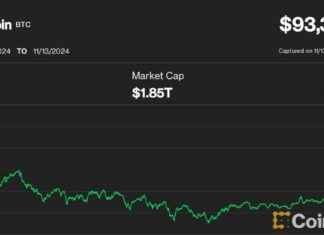Bitcoin (BTC) price reacted as high as $44,600 on Aug. 7, the highest level since before the infamous May 19 crash. There are growing speculations that Bitcoin could experience a similar upside boom to the one that started in October 2020.
At least two indicators predicted that Bitcoin would experience massive uptrends. Glassnode’s Entry Adjusted Net Unrealized Profit/Loss helps investors determine if the Bitcoin network is in a profit or loss state.
Understanding NUPL and its heatmap
NUPL values above zero signify that the network is in net profit. NUPL values below zero indicate net loss. Investors will be able to spot market tops and lows if NUPL is greater than zero.
A heat map is used to show the extent of deviations from zero. Red is indicative of “capitulation”, orange indicates “hope”, yellow signifies “optimism,” green suggests “belief,” while blue underscores “euphoria” during an uptrend.
After successfully rebounding from the red zone in March, the Bitcoin NUPL rose to zero in October 2020.
The prices increased from around $10,000 to $65,000 later.
Bitcoin fell to below $30,000 later, which was a period when its NUPL mood changed from greed to denial to anxiety. However, a strong buying sentiment at the $30,000 level helped to maintain Bitcoin’s upside sentiment intact and offset anxiety with optimism.
But just as Bitcoin reclaimed $40,000 and exceeded its upside momentum, the sentiment switched back to belief for the first time since October 2020. In a tweet, Lex Moskovski (Chairman of Moskovski Capital’s Investment Office) also highlighted Bitcoin’s upside prospects after the NUPL upgrade.
“We have entered the Belief phase.”
The Fear and Greed Index reached 69 as an alternative, a score that signals a sentiment of Greed which the market hasn’t seen in May.
The second indicator
On a similar note, market analyst Will Clemente also highlighted another indicator that promised to repeat October 2020’s upside boom. The fractal was about the dynamic between long-term and short-term Bitcoin owners.
Clemente noted that short-term holders sold off their Bitcoin holdings to long-term holders, insomuch that the former accumulated almost as much as the Bitcoin supply in August 2021 that they had back in October 2020.
The analyst stated that while long-term holders have more than 66% supply, short-term holders are now at just 20%. “Long-term holder supply was just 68% before the bull run started in October.”
This indicated that the current price was a result of investors who did not intend to sell Bitcoin immediately.
Bitcoin reached an intraday peak of $44,600 Saturday, but it fell back due to profit-taking sentiment. At the time of writing, BTC was trading at $43,500.







